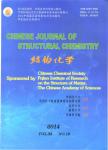Effect and Mechanism Analysis of Solvent on the Electron Transition of Fluoroquinolones Based on Quantum Chemical Calculation
Effect and Mechanism Analysis of Solvent on the Electron Transition of Fluoroquinolones Based on Quantum Chemical Calculation作者机构:College of Chemical Engineering Beijing University of Chemical Technology
出 版 物:《Chinese Journal of Structural Chemistry》 (结构化学(英文))
年 卷 期:2017年第36卷第12期
页 面:1931-1946页
核心收录:
学科分类:1007[医学-药学(可授医学、理学学位)] 081704[工学-应用化学] 07[理学] 070304[理学-物理化学(含∶化学物理)] 08[工学] 0817[工学-化学工程与技术] 0703[理学-化学] 10[医学]
主 题:fluoroquinolones electron transition solvent effect index system photo-induced reaction
摘 要:Ciprofloxacin(CIP), moxifoxacin(MOX) and enrofloxacin(ENR) were selected as typical fluoroquinolones(FQs) to analyze the excitation-enhancing effect and mechanism of solvents on FQs' electron transition based on quantum chemical calculations. The UV spectra of three FQs in gas and five different solvents(water, cyclohexane, dimethylsulfoxide, methanol, acetone) were calculated using Gaussian 09 software. The transition mechanisms of FQs' main electron transitions were analyzed by natural bond orbital(NBO) theory, and the solvent effect on each electron transition was assessed qualitatively and quantitatively by sensitivity analysis and an established index system. The excitation enhancing mechanism of solvent on electron transitions of FQs was analyzed from the view of photo-induced reactions between solvent and FQs molecules. The results show that there are two main transitions located in the spectrum ranges of 300~380 and 240~300 nm for each FQ in any medium, which are assigned as n →π* and π→π* electron transitions, respectively. By comparison, the n →π* transition is more sensitive to solvent because of the energy transfer between solvent molecules and FQs, but the solvent effect on the π→π* transition is stronger than on the n →π* transition. The sequence of affected extent of solvent effect on electron transition was CIP 〉 MOX 〉 ENR, and the sequence of solvent effect was water 〉 DMSO 〉 methanol 〉 acetone 〉 cyclohexane(stronger solvent effect with increasing the dielectric constant of solvent). From the view of photo-induced reactions, the reaction between FQs*T1 and solvent*T1 has the decisive regulatory effect on the n →π* transition of FQs in solvent, and the reaction between FQsS0 and solvent*TI has an enhancing effect on the π→π* transition.




